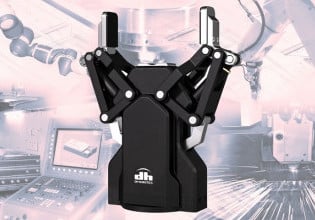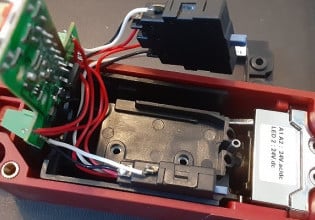Engineering Editorial Perspective: 2023 Top Trends in Automation
What are some of the most recent developments making waves in the world of robotics and automation? Learn about a few trends with some editorial thoughts about the future of the technology for end users.
Automation technology doesn’t look the same as it did even just a few years ago. And yet, even with rapid advancements in computation, many industries rely on tried-and-true technology to keep systems in operation. This means that not every new trend is bound to be a massive success.
To keep a forward-thinking approach, it’s important to have some insight into the current paradigm-setting technologies, but only time will tell if these trends continue to see upward growth.

It’s important to look at trends–we won’t always follow them, and they might not always stick around, but they can indicate the momentum of industry.
Here are a few of the trends making waves halfway through 2023, along with some editorial thoughts about the implications and impacts of such new ideas in the world of industrial automation.
The Conversation is ‘Edge’, not as Much ‘Cloud’
Visiting shows and discussing concepts with OEMs and designers just 1-2 years ago, it seemed clear that cloud-based IoT development was the tech to deploy. Making use of remote servers and app development teams certainly had appeal - you don’t need to build and maintain on-premise data storage, and you don’t require a heavy lift from your own IT/OT team. While these claims are still largely true, pushing data to the cloud has taken a passenger seat to the speed, security, and cost-effectiveness of on-site processing.

IPCs from ASRock Industrial
The physical devices take the form of ‘edge’ servers and computers. Some of them are full-size rack-mounted server packages, some may be highly-capable industrial PCs (IPCs) while others reside inside the CPU of a smarter vision camera (more on this trend later). Allowing devices to perform vast calculations and store massive amounts of data at the edge of the factory floor (both literally and virtually) is a reality thanks to the compact design of integrated circuits.
Many industrial skeptics have some well-founded fears of data exposure when releasing private data across an internet-based network. The mystery of the ‘virtual world’ is not a safe space unless you know how it works and what technology to trust. In contrast, keeping your own system safe in an IT closet, with careful control over what portions are even exposed to the internet in general, provides some peace of mind. Not to mention the cost savings resulting from keeping a handle on your own data.

Industrial ‘edge’ server from OnLogic.
Will edge devices win to contest for full-scale adoption, or will cloud-based processing rise once again to the top of the stack? I don’t know for sure, but as an engineer, I admit that I feel some level of security in pointing to exactly where my own data is located.
Cameras Are Getting Smarter
Let me start by saying I despise the word ‘smart’ when it comes to technology. It’s a buzzword that can be attached to any device with no context as to how or why it improves the intelligence of any system.
But in this case, I mean ‘smart’ to say the integration of artificial intelligence processing ability along with a camera for actual vision.

AI-embedded camera from Cognex.
Traditionally, sensing a single object space or area was performed with an array of sensors, each one with logic that detected something within a 2D or 3D space. Light curtains and IR cameras are great examples. When paired with a camera, software could investigate the picture and place a circle or square onto certain objects, providing a centroid for robot bin picking or a percent tolerance match against a control image for QC.
Why does AI help this situation? Essentially, the improvement here is the recognition of changing parameters that help a computer ‘see’ and ‘learn’ what is happening in a picture with a much lighter burden on the initial teaching setup process.
The implication for end users would be cameras that do not need a connection to the internet with a vast control image repository while still providing highly accurate analysis. It could be a camera that can analyze both visible and IR spectrums to provide accurate tracking data for area safety. AMR platforms can be outfitted with only a couple of cameras and keep an eye on the complexities of a vast warehouse while in motion.

Camera from SICK with software to identify the point cloud of objects in a bin.
I still don’t know if I love the term ‘artificial intelligence’ since the computer is no more intelligent than it used to be. However, the rapid advancement of teaching algorithms and continuous improvement is certainly a key player in why the past few months have seen such widespread adoption and capability from vision systems.
Partnerships for Project Integration
You don’t often find an entire robotic work cell with individually customized control, robot, and tooling solutions. Certainly, there are many examples, just ask the nearest engineering integrator firm. However, what you see far more often are product lines that incorporate a few standard items into a single co-branded solution.

The miniPAL palletizer partnership between Universal Robots and Columbia/Okura.
Whatever you need to do, someone has probably already done it. Pack a box, apply some adhesive, or weld a piece of metal? There really is nothing new under the sun.
The recent trend is for a number of OEMs to collaborate on a single work cell, each providing added value and functionality with off-the-shelf parts. The result is a comprehensive package ready to forklift off of a truck, set on the shop floor, and plug into power.
What does this mean to manufacturers? Speed and ease. The common story is to hear about a customer getting an entire robotic process set up–including training the operators–in a single workday. The design process is simple, since the task to be accomplished is well understood and many robots no longer require huge, dedicated work enclosures to be installed.

Entire system partnership between PBC Linear, Applied Cobotics, Universal Robots, and Olis Robotics.
A specific example of this process is a part handling work cell from PBC Linear, outfitted with a UR cobot, remotely monitored by a module from Olis Robotics. Each of these unique subsystems (which are in themselves standard, off-the-shelf assemblies), provided the end user with the ability to program, run, and troubleshoot the system within a few hours.
There’s still a huge need for engineering teams to design custom solutions. We haven’t stepped out of that world yet. But this does lower the barrier to entry into the automation Industry 4.0 world without the scale of space, time, and capital investment we used to see.
Here’s to the rest of 2023, I can’t wait to see what happens next!






